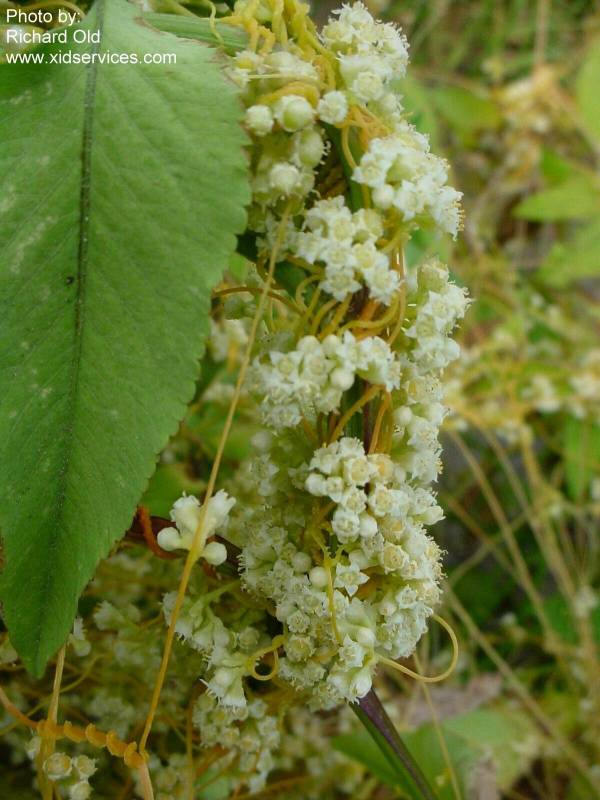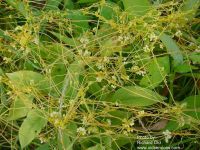Distribution: Occurring chiefly east of the Cascades crest and in the Columbia River Gorge in Washington; British Columbia to California, east to the Atlantic Coast.
Habitat: Parasitic on a variety of hosts.
Flowers: July-September
Origin: Introduced
Growth Duration: Perennial
Conservation Status: Not of concern
Pollination: Self-pollination
Parasitic, twining, annual or perennial herbs, with very slender, pinkish-yellow to white, glabrous stems, often forming large mats.
Leaves reduced to tiny scales.
Flowers in small clusters, on pedicels about equal to the calyx; calyx not fleshy, 1.5-3 mm. long, shallowly cup-shaped, the 5 lobes broadly ovate-triangular, overlapping slightly at the base; corolla equaling the calyx, persistent, the tube broadly bell-shaped, slightly longer than the 5 spreading to reflexed, lanceolate, acute lobes; stamens 5, inserted just below the sinuses of the tube, exerted, the filaments exceeding the small anthers; obovate-oblong scales covering the base of the filaments are conspicuously fringed above, joined about 1/3 their lengths; styles 2, 1 mm. long; ovary superior, 2-celled.
Capsule depressed-globose, 2.5-3 mm. long.
Publication: Amer. J. Sci. Arts 43(2): 340-341, pl. 6, f. 22-24. 1842.
Cuscuta pentagona Engelm. var. pentagona [HC]
PNW Herbaria: Specimen records of Cuscuta pentagona in the Consortium of Pacific Northwest Herbaria database
WA Flora Checklist: Cuscuta pentagona checklist entry
OregonFlora: Cuscuta pentagona information
E-Flora BC: Cuscuta pentagona atlas page
CalPhotos: Cuscuta pentagona photos





